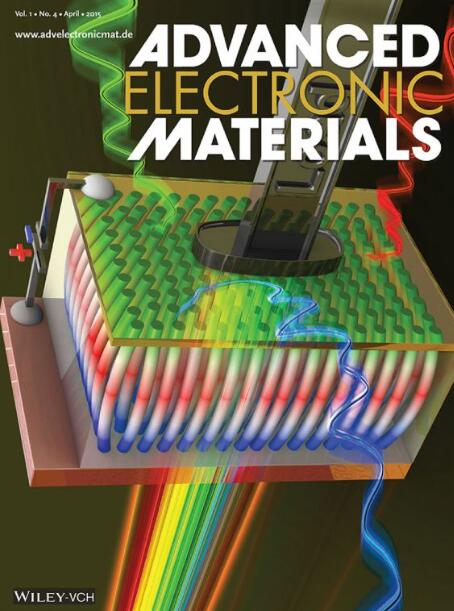Highly Transparent, Conductive, and Mechanically Robust Hydrogels via Rapid In Situ Synthesis for Flexible Electronics
IF 5.3
2区 材料科学
Q2 MATERIALS SCIENCE, MULTIDISCIPLINARY
引用次数: 0
Abstract
Hydrogels face challenges as flexible electronic materials, including complex preparation processes and difficulty in balancing frost resistance, water retention, and mechanical properties. Here, a cost-effective and efficient strategy for in situ rapid synthesis of hydrogels with Mo2C-derived molybdenum polyoxometalates (POM) is developed. The Mo-POM/ammonium persulfate (APS) redox pair enables rapid initiation of in situ free radical polymerization at room temperature, effectively addressing the limitations associated with conventional photo- or thermally-initiated methods. The tunable redox activity of Mo-POM allows precise control of polymerization time. This synthesis strategy utilizes the “freezing effect” achieved through rapid polymerization to achieve a uniform distribution of hydrogel components. Additionally, the incorporation of Mo-POM and sodium alginate (SA) introduces diverse intermolecular interactions within the hydrogel network, significantly enhancing mechanical properties. LiCl incorporation provides exceptional frost resistance, water retention, durability, and stability even under prolonged load cycling. Furthermore, the hydrogel demonstrates outstanding electromechanical properties, reliably and rapidly responding to both large and subtle motions. This tunable synthesis strategy successfully balances mechanical and electromechanical performance, antifreeze capability, water retention, and durability. Consequently, it offers a promising approach for large-scale, cost-effective industrial production of high-performance hydrogels.

水凝胶作为柔性电子材料面临着各种挑战,包括复杂的制备工艺以及难以平衡抗冻性、保水性和机械性能。在此,我们开发了一种具有成本效益的高效策略,利用源自 Mo2C 的钼聚氧金属盐(POM)原位快速合成水凝胶。Mo-POM/过硫酸铵(APS)氧化还原对可在室温下快速引发原位自由基聚合,有效解决了传统光引发或热引发方法的局限性。Mo-POM 的可调氧化还原活性允许精确控制聚合时间。这种合成策略利用快速聚合产生的 "冷冻效应 "实现了水凝胶成分的均匀分布。此外,Mo-POM 和海藻酸钠(SA)的加入还在水凝胶网络中引入了多种分子间相互作用,从而显著提高了机械性能。锂盐的加入使该水凝胶具有优异的抗冻性、保水性、耐久性和稳定性,即使在长时间负载循环的情况下也是如此。此外,这种水凝胶还具有出色的机电特性,能对大的和微小的运动做出可靠而快速的反应。这种可调合成策略成功地平衡了机械和机电性能、防冻能力、保水性和耐久性。因此,它为大规模、经济高效地工业化生产高性能水凝胶提供了一种可行的方法。
本文章由计算机程序翻译,如有差异,请以英文原文为准。
求助全文
约1分钟内获得全文
求助全文
来源期刊

Advanced Electronic Materials
NANOSCIENCE & NANOTECHNOLOGYMATERIALS SCIE-MATERIALS SCIENCE, MULTIDISCIPLINARY
CiteScore
11.00
自引率
3.20%
发文量
433
期刊介绍:
Advanced Electronic Materials is an interdisciplinary forum for peer-reviewed, high-quality, high-impact research in the fields of materials science, physics, and engineering of electronic and magnetic materials. It includes research on physics and physical properties of electronic and magnetic materials, spintronics, electronics, device physics and engineering, micro- and nano-electromechanical systems, and organic electronics, in addition to fundamental research.
 求助内容:
求助内容: 应助结果提醒方式:
应助结果提醒方式:


